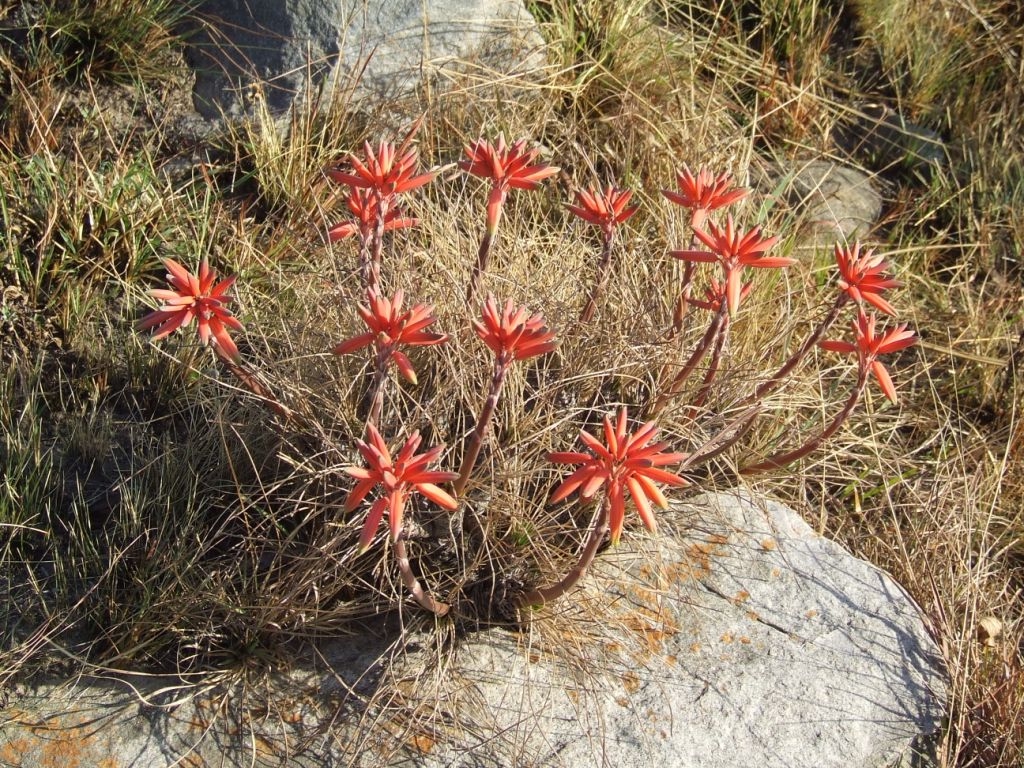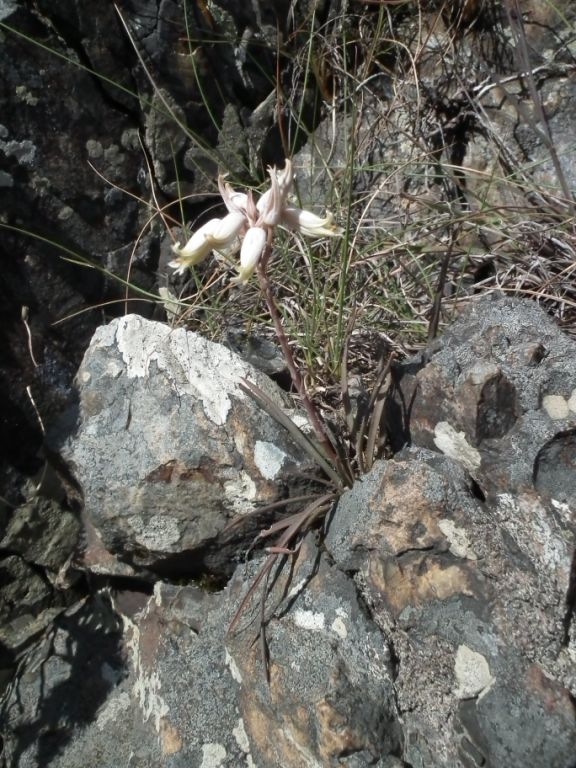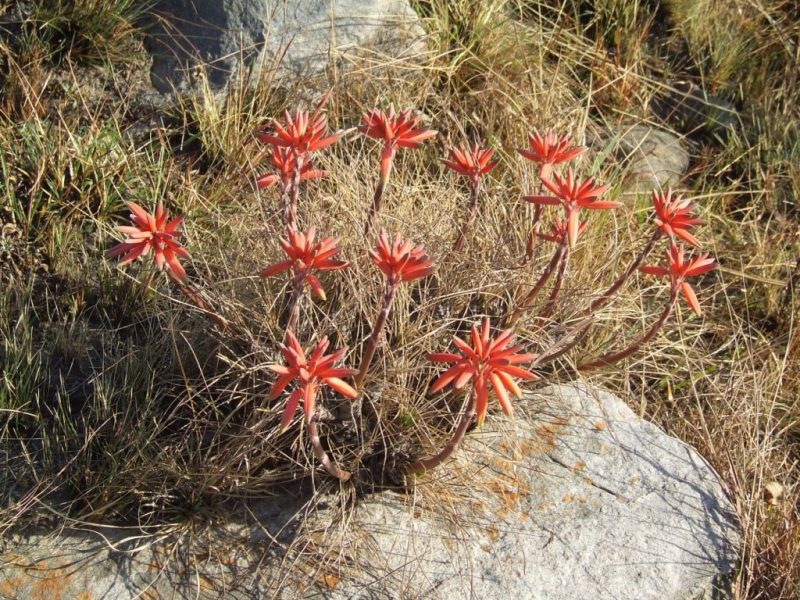Mountainlands is a sanctuary for several aloe species that occur from the low lying riverine forests into the higher lying grasslands. Grass aloes are some of the reserve’s special plant treasures and are so named because of their long, narrow leaves that have a grass like appearance and not because of their habitat.
Grass aloes are protected in South Africa and may not be disturbed nor may their seeds be collected, unless one is in possession of a permit issued by a conservation authority.
Aloe albida and Aloe chortolirioides are two of the grass aloes that prefer mountain summits, rocky grasslands and being in the mist belt. Aloe albida is a tiny plant with the inflorescence growing up to 16cm high. Its white flowers are relatively rare among aloes. The best way to find these little guys is to make yourself comfortable on a rock in their preferred habitat and comb through the grass, with the hope of spotting the leaves which can grow up to 150mm and are only 5mm wide.
Aloe albida occurs from Barberton to Swaziland and is listed on CITES Appendix 1 and wild plants may therefore not be internationally traded. It is also classified as Near Threatened on the South African National Biodiversity Institute’s Red list, which indicates it is likely to become at risk of extinction in the near future. South Africa uses the internationally endorsed IUCN Red List Categories and Criteria to classify plants as this system is designed to measure species’ risk of extinction and to highlight those urgently in need of conservation action.
Aloe chortolirioides is another unusual aloe and it takes a trained eye to distinguish it from the various grasses. They form dense tufts of branches and it’s more likely that you will stumble over one before you recognize it as an aloe due to the very thin leaves through which it blends into its environment. These sturdy plants usually flower in response to fire and flowering may occur from March to September. It is easy to spot them then as their reddish colour forms a sharp contrast against the charred landscape. Although their distribution area includes Swaziland, Mpumalanga and Limpopo Province, it’s classified as Vulnerable on the SANBI Red List which indicates it’s facing a high risk of extinction.

Aloe chortolorioides

Aloe albida

